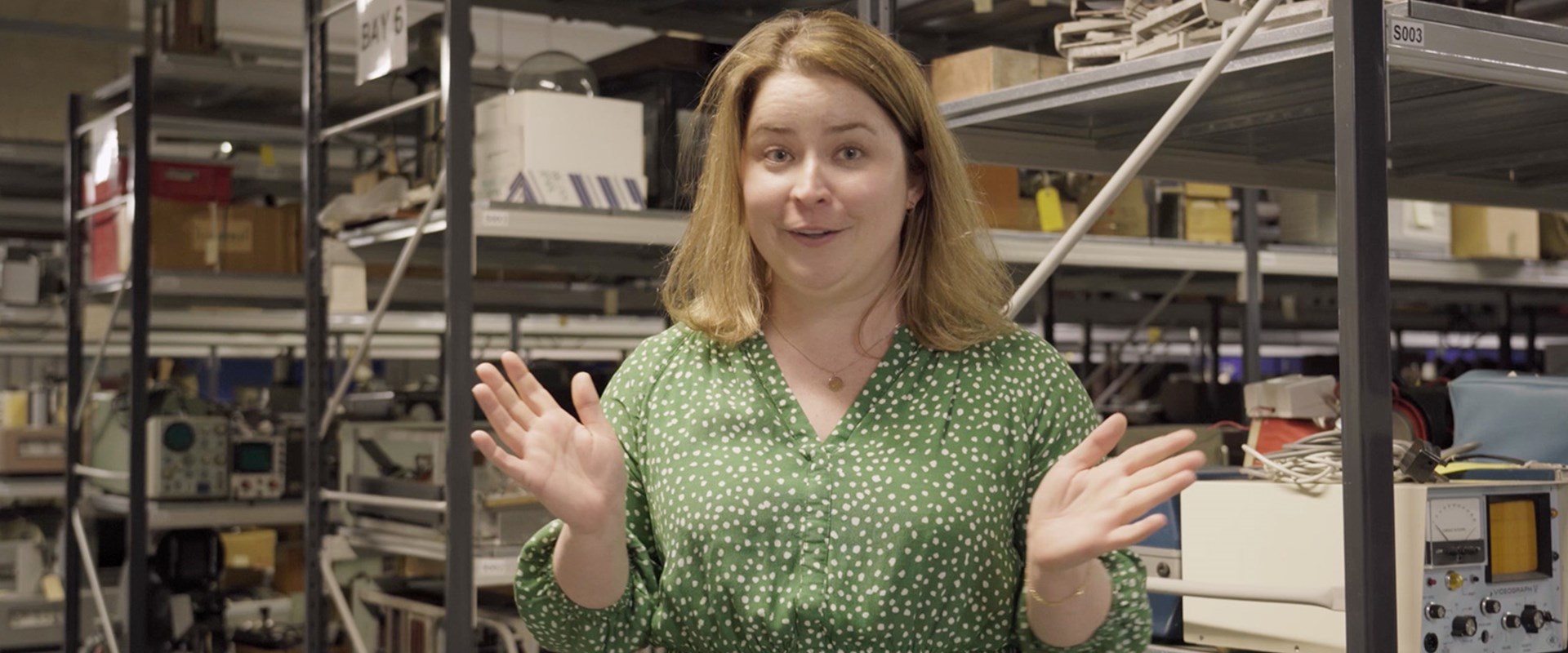Key in a search term below to search our website.
Key in a search term below to search our website.

Who
Sophie Goggins, Senior Curator of Biomedical Science
Where
National Museums Collection Centre in Granton
“There are no boring objects, but I do have what I call a ‘big grey box’ problem...
While we hold historical objects in our collections, curators are also constantly collecting contemporary material to represent the present. Throughout the Covid-19 pandemic curators across all the teams at National Museums Scotland were collecting objects to tell those stories.
The lateral flow tests (T.2022.42) and vaccines (T.2021.12) are more traditional medical examples, while objects like the social distancing poster from the RSPB Mersehead nature reserve in Dumfries and Galloway (T.2023.9) tell personal stories from the pandemic.
Jars like this large ornamental Rhubarb (T.1972.221) would have been displayed in the window of pharmacies to attract people inside. Also known as specie jars they did not always have samples in them.
The jar labelled 'leeches' (T.1975.158) would have been very much in use. This one has holes in the lid to provide ventilation for the leeches and spikes on the inner rim to keep them from climbing out.
The Pasteur-Chamberland filter (T.2015.100.1) was first invented in Louis Pasteur’s laboratory by Charles Chamberland in 1884 to provide clean water for Pasteur’s experiments. The design was adapted, and filters were sold to provide and store clean water in businesses and the home. There is one on display in the Ceramics gallery on the 3rd floor.
Big, medium and small grey boxes make up a large amount of the science and technology collections. Whilst they may not be the most interesting to look at the stories they can tell us make up for it.
One little grey box on display is the MinION (T.2016.3), a small machine that fits in the palm of your hand but contains immense power. The MinOIN is a small genetic sequencer used everywhere from the International Space Station to tracking Ebola outbreaks. Proving that you shouldn’t always judge a book, or box, by it’s cover!
Arguably the most famous sheep in the world, Dolly (Z.2003.40) was the first mammal cloned from an adult cell. Born at the Roslin Institute on 5 July 1996 she represented a huge breakthrough in genetic science. She’s also named after country music superstar Dolly Parton.
Rotating slowly, Dolly is on display in the Explore gallery on level 1.
Named after the designer’s wife, the Chantal Meteor jukebox (T.1976.55) was marketed as a machine for the future.
The discs that are currently resting in our machine were selected by my colleague, Alan Mills. He selected discs dating from the 1950s through to the 1960s. From this selection, Julie Orford, Assistant Curator of Science, has put together a playlist for your listening (and dancing!) pleasure, featuring songs from the 1950s to the early 1960s, to cover the period of manufacture for our jukebox.
The Vine Arm (T.2018.1) was designed by prosthetic artist Sophie de Oliveira Barata of the Alternative Limb Project in 2017 for model Kelly Knox.
The vine arm is controlled by sensors housed under the big toe in the associated shoes and moves and curls.
See more about the Vine Arm, including a video of it in action.
Geissler tubes (T.2004.611) contain gases in a vacuum tube with an electrode at one end. When voltage is applied, they light up or glow. The portions that are green indicate uranium glass.
Geissler tubes were produced mostly for entertainment, like this one in the shape of a dog (T.1933.159) throughout the late 19th century and are the precursor to neon lights.